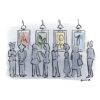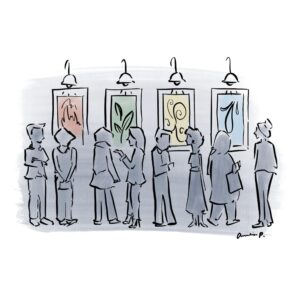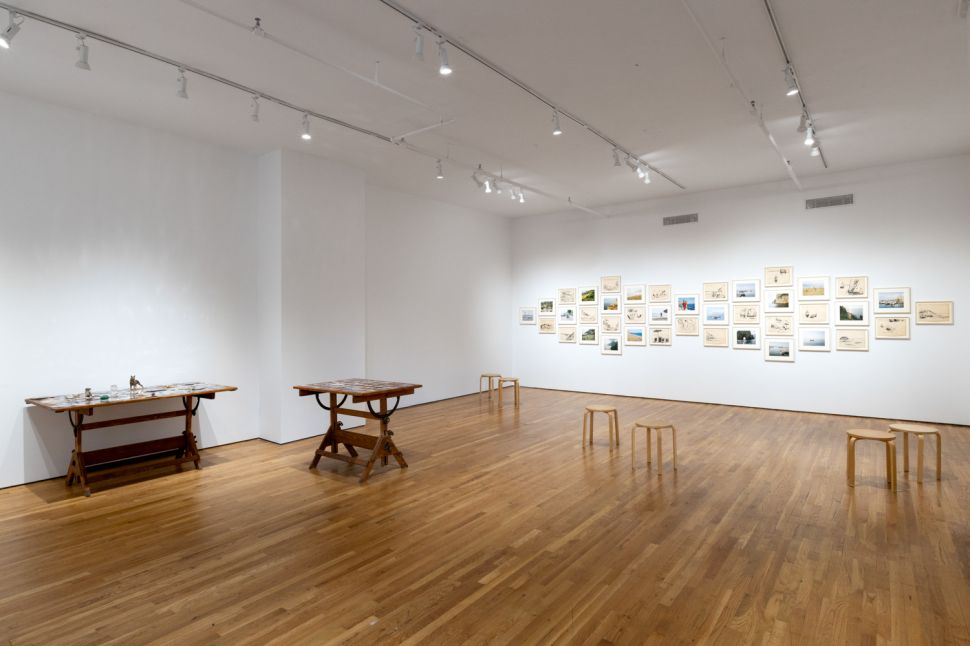
Bankers boxes, flat file cabinets, archival portfolios—they’re all here, placed with intention and order, preserving the work of oft-overlooked yet exciting artists in Soft Network’s Soho office. Co-founded in 2021 by curator Chelsea Spengemann, now executive director, and artist Sara Vanderbeek, Soft Network is a nonprofit organization that “preserves and provides access to the work of vital yet often vulnerable experimental artists and those who care for them.” It does this by assisting artists and those managing artist estates—or legacy workers, as they’re known—in cataloging, storing, digitizing and exhibiting artwork through a two-year-long Archive-in-Residence program. This helps artists and legacy workers preserve estates for the future; the ultimate goal is not to house work permanently but to help the estate stand in the art world on its own.
The idea was born out of personal experience. Spengemann had been assisting Sara VanDerBeek in managing the estate of Sara’s father, artist Stan Vanderbeek, for nearly twenty years, and they realized there were little to no resources to assist people who had been bequeathed artist estates but didn’t have their art world expertise. Spengemann believes this kind of legacy work has long flown under the radar because it’s seen as a form of caregiving. But while many have developed more appreciation for and understanding of what goes into physical and emotional caregiving in our post-pandemic world, it’s still difficult for some to see the parallels with the management of artist estates. Like medical caregiving, managing a legacy can be emotional, laborious and time-consuming work, albeit of a different kind.
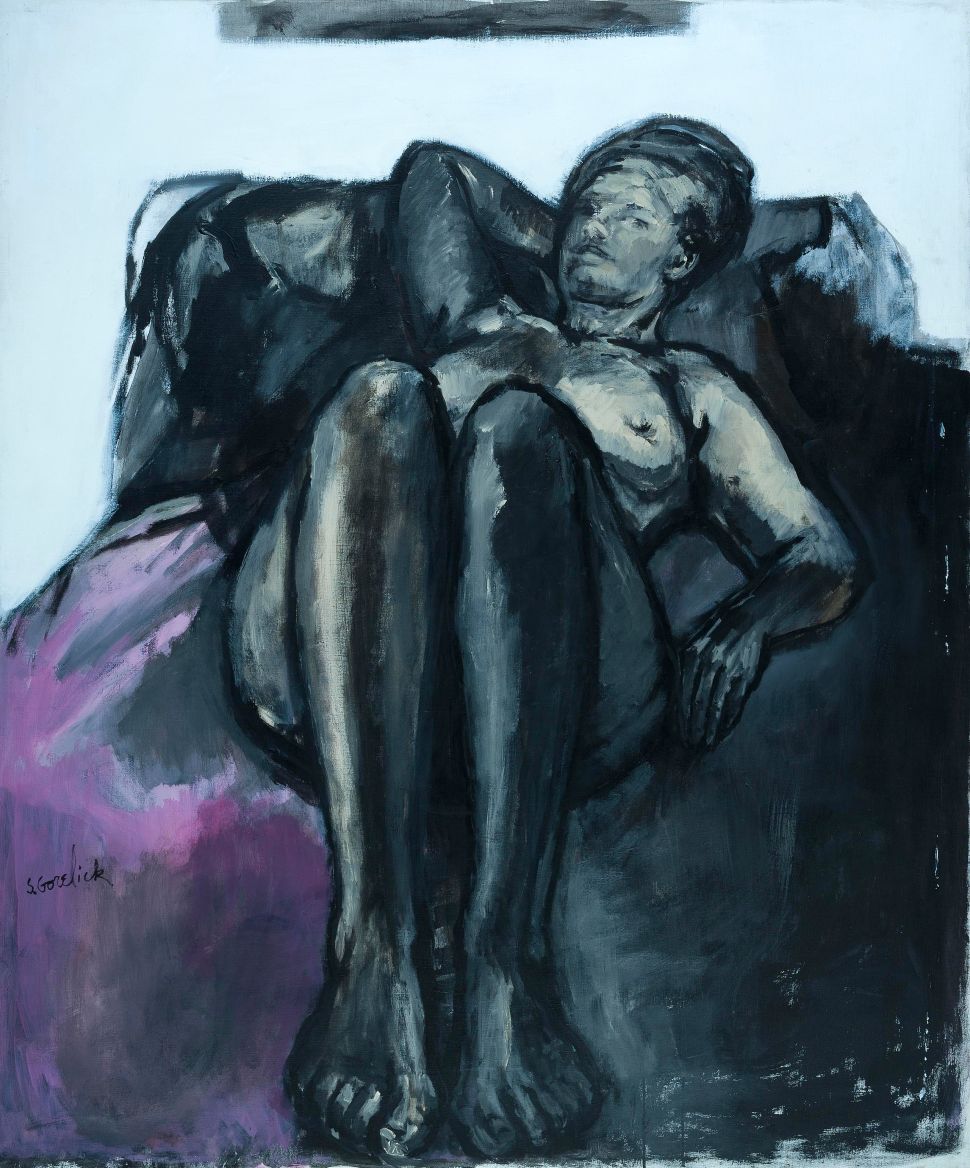
“Every time you see work by a dead artist in a gallery or a museum, there’s a living person that made that possible,” Spengemann told Observer. “This labor often goes uncompensated, even though it’s a ton of work to preserve and even revive an artist’s career.” Soft Network’s fully-funded residency makes it easier—the organization serves as an artistic caregiver to artist estates. And the estate can continue to tap into Soft Network as a resource after the residency is over through programs such as the Artist Foundations & Estate Leaders List, or AFELL, which is “a membership-based, peer-to-peer listserv for sharing resources, available to artists and legacy workers.”
SEE ALSO: Director Thelma Golden On the Future of Programming at the Studio Museum in Harlem
During the Archive-in-Residence program, an artist’s archive is not just cataloged, researched and digitized but also exhibited in Soft Network’s own exhibition space in two corresponding four- to six-week shows: a group exhibition that includes contemporary artists in conversation with the resident work and a resident solo show. There may be public programs that engage with the work as well. And Soft Network also helps legacy workers make the kind of art world connections that help ensure the estate’s future.
For example, when supporting Haitian-American mixed-media artist Paul Gardère’s work, Soft Network obtained a booth as a nonprofit at Independent 20th Century to put Gardère’s work in front of a larger audience. At the recent OFFSCREEN art fair of image-based works in Paris, Soft Network exhibited the work of their current Archive-in-Residence of filmmaker, film editor and photographer Susan Brockman. They won a prize for Best Presentation, which came with €10,000 that will support the preservation of Brockman’s work and access to it. The 2025-2027 Archive-in-Residence will be that of photographer Sheyla Baykal, a longtime chronicler of downtown New York’s avant-garde performance scenes who passed away in 1997.
The collections Soft Network works with the most, according to Spengemann, are film, photography, experimental and mixed-media work. These are “the hardest to maintain and make accessible after an artist’s life because they’re not as straightforward as a three-dimensional painting or a sculpture,” she said. Figuring out how to present these works can be challenging and, in some cases, because the artist had no market when it was made, there’s little funding for preservation now. Since Soft Network launched, many artist estates have found them by word of mouth. In addition to the Archive-in-Residence, they work with three artist estates held in their archives for a fee–the Stan VanDerBeek Archive, the Rosemary Mayer Estate and the Shirley Gorelick Foundation each have work on site; the associated fees help keep the organization solvent, as does the estate consultation work that it offers on a sliding scale.
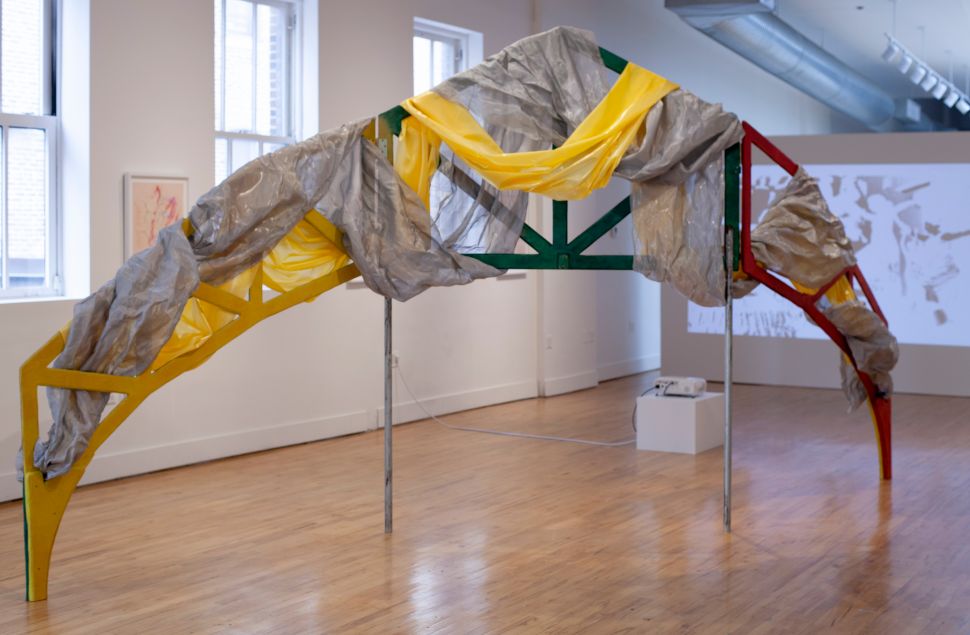



During our conversation, Spengemann emphasized that Soft Network is not a gallery but rather a “shared studio and active storage space with access to an exhibition space.” That space is shared with designer Rachel Comey, a longtime supporter of the organization. Soft Network provides artwork for her showroom in exchange for the space to exhibit work and hold public programs that bring the work of previously overlooked artists into modern conversation. Coming up on October 28 and 30, for example, are events centering painter Shirley Gorelick’s work, which will be hung in the space, including discussions about portraiture, community and memory featuring historians, academics, archivists and artists. Outside of the public programs and exhibitions, historians, artists, and curators can view the resident work in Soft Network’s offices by appointment.
It’s perhaps not surprising that many of the estates Soft Network works with belong to artists who were women, people of color and/or queer. These works are pieces of art history that have been disregarded or left out of the narrative previously, Spengemann says, but through Soft Network, they can once again be part of the conversation—or in some cases, for the first time. These artists then become accessible to contemporary artists seeking inspiration, curators seeking missing pieces of a puzzle and historians chronicling parts of the art world once unseen.
“We really just try to be a community for people doing this work, bring visibility to this work and then as a group help one particular estate and collection with whatever they need,” Spengemann said. Artists have often operated via community, she added, and hers is dedicated to freeing their work from those bankers boxes, literally and figuratively.
Donate to help fund Soft Network’s efforts here.
This post was originally published on this site be sure to check out more of their content

